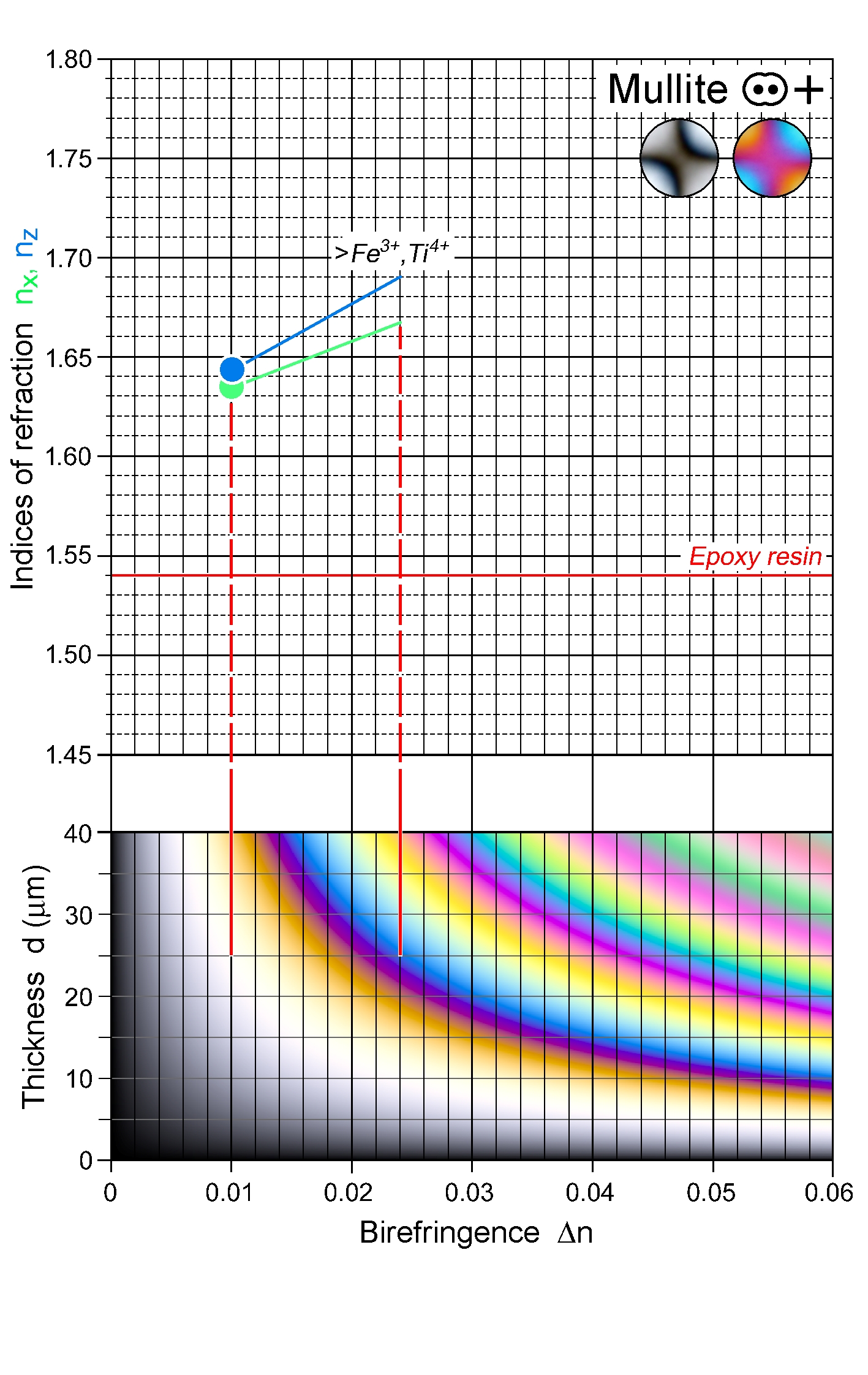|
| Formula | Al4+2xSi2-2xO10-x (x commonly 0.2 – 0.4) |
| | Optic class & sign | Biaxial positive |
| | Optical orientation | X = a, Y = b, Z = c |
| | Optical plane | (010) |
| | Relief | Moderate to high |
| | Refractive indices | nx = 1.639 -1.670
|
|
ny = 1.641 -1.675
|
|
nz = 1.653 -1.691
|
|
| n increases with Al, Fe3+, Ti |
| | Birefringence (max.) | 0.014 - 0.021 |
| | | Δn increases with Al, Fe3+, Ti |
| | Optic Angle
| 2Vx
|
| | 2Vz
= 45 - 50° |
| | Sign of elongation | Length-slow, l(+) |
| | Interference figure | Crystals commonly too small to obtain optic axis figures |
| | Colour / pleochroism | Colourless; Fe-Ti-rich: colourless to pale pink pleochroic X>Y=Z |
| | Zoning | |
|
|
| Form | Habit | Acicular parallel to c |
| | | Surface | |
| | Cleavage | {010} |
| | Twinning | |
| | Extinction | Straight to elongation (c) |
|
|
| Reaction textures | |
| | Alteration / decomposition | Hydrated Al-silicates |
|
|
| Occurence | Ign | |
| | | Met | Sanidinite facies; contact zone of mafic intrusions; pelitic xenoliths in mafic intrusions (buchites) |
| | | Sed | |
| | | Hyd | |
| | | Other | |
|
|
| Distinctive properties | Occurrence, relief, straight extinction, form; may be hard to distinguish from sillimanite |
| | Additional comments | Refractive indices lower than those given above (nx to 1.630, nz to 1.640; Δn as low as 0.010) apply to pure, synthetic material only. |
|
|

 Images
Images 


 Images
Images 
